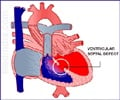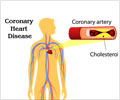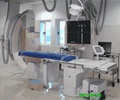Male-pattern baldness and premature graying associated with risk of early heart disease. Both are stronger risk factors than obesity.
- Male-pattern baldness and premature graying increase risk of heart disease.
- These two factors are stronger risks than obesity.
- Obesity is associated with a fourfold risk of early heart disease.
This study investigated the association between premature hair graying and alopecia patterns in young Indian men with coronary artery disease. The study included 790 men aged less than 40 years with coronary artery disease and 1 270 age-matched healthy men who acted as a control group.
All participants had a clinical history taken, electrocardiogram (ECG), echocardiography, blood tests, and coronary angiogram. Participants were given a male-pattern baldness score of 0 (none), 1 (mild), 2 (moderate), or 3 (severe) after analysis of 24 different views of the scalp. A hair whitening score was determined according to the percentage of grey/white hairs: 1: pure black; 2: black greater than white; 3: black equals white; 4: white greater than black; 5: pure white.
The researchers analyzed the correlation between premature gray hair and alopecia with the complexity and severity of angiographic lesions (an indicator of coronary artery disease) and compared the results between the two groups.
Coronary artery disease and premature graying
The researchers found that young men with coronary artery disease had a higher prevalence of premature graying (50% versus 30%) and male-pattern baldness (49% versus 27%) compared to healthy controls. After adjusting for age and other cardiovascular risk factors, male-pattern baldness was associated with 5.6 times greater risk of coronary artery disease (95% confidence interval [CI] 4.0-7.8, p<0.0001) and premature graying was associated with 5.3 times greater risk (95% CI 3.7-7.5, p<0.0001).
Strongest predictors of coronary artery disease
Male-pattern baldness and premature graying were the strongest predictors of coronary artery disease in young Indian men followed by obesity, which was associated with 4.1 times greater risk (95% CI 2.8-6.0, p<0.0001). Diabetes mellitus, hypertension, family history of premature coronary artery disease, central obesity, higher body mass index, dyslipidaemia and smoking were predictors of coronary artery disease but to a lesser extent than male-pattern baldness, premature graying, and obesity.
Dr Dhammdeep Humane, lead author, senior cardiology resident, U.N. Mehta Institute of Cardiology and Research Centre, added: "Men with premature graying and androgenic alopecia should receive extra monitoring for coronary artery disease and advice on lifestyle changes such as healthy diet, exercise, and stress management. Our study found associations but a causal relationship needs to be established before statins can be recommended for men with baldness or premature graying."
Professor Marco Roffi, course director of the ESC programme at CSI and head of the Interventional Cardiology Unit, Geneva University Hospital, Geneva, Switzerland, said: "Assessment of risk factors is critical in the prevention and management of cardiovascular disease. Classical risk factors such as diabetes, family history of coronary disease, smoking, sedentary lifestyle, high cholesterol levels and high blood pressure are responsible for the vast majority of cardiovascular disease. It remains to be determined whether potential new risk factors, like the ones described, may improve cardiovascular risk assessment."
References:
Male-pattern Baldness and Premature Greying Associated with Risk of Early Heart Disease - (https://www.escardio.org/The-ESC/Press-Office/Press-releases/male-pattern-baldness-and-premature-greying-associated-with-risk-of-early-heart-disease?hit=wireek)
Source-Eurekalert
















